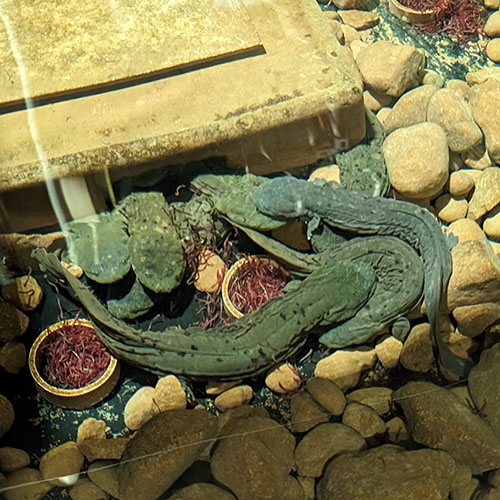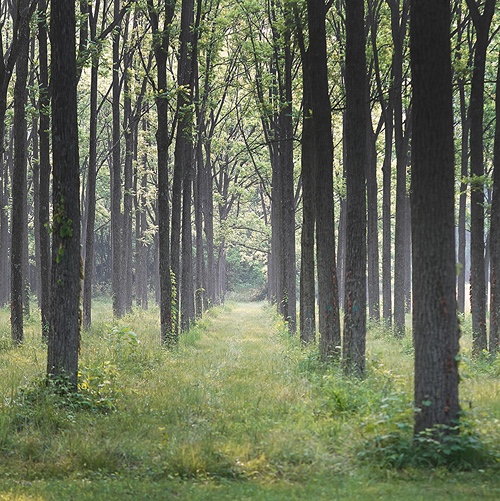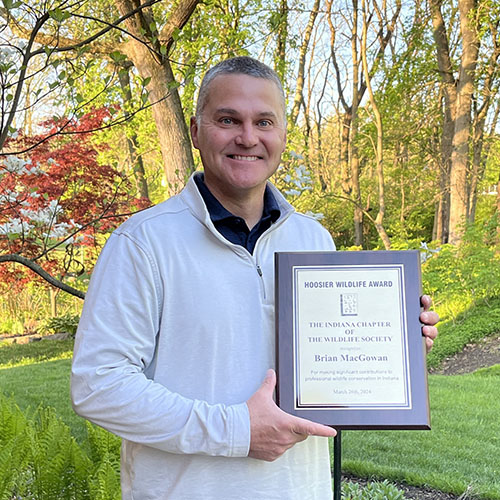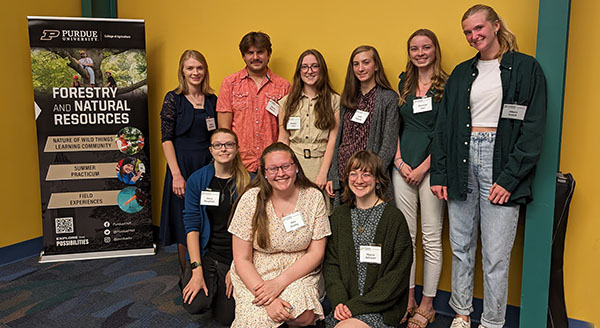Students from Purdue Forestry and Natural Resources took their classroom knowledge to the field for summer internships and paid positions across the country, gaining valuable experience, hands-on training and career guidance. The FNR Field Reports series will offer updates from those individuals as summer positions draw to a close.
Lucas Wilson, a senior wildlife major from Batesville, Indiana, worked as a breeding bird atlas technician for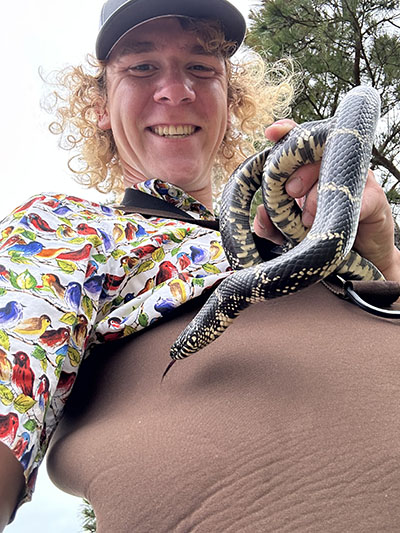 the North Carolina Wildlife Resources Commission this summer.
the North Carolina Wildlife Resources Commission this summer.
In that role, Wilson recorded all bird breeding activities ‑ such as nesting, feeding young, or defending territory - in rural and wilderness areas which were unlikely to be covered by the efforts of citizen scientist volunteers. The data from his surveys went into a larger census of all bird populations in North Carolina, to establish a definitive dataset on where and how frequently certain species are breeding in the state.
“I learned a lot about bird behavior,” Wilson said of the position he found on the Texas A&M Natural Resources job board. “Subtle ways that birds act can be a huge hint towards if they have a nest or young nearby. I also learned much more about the less common calls that some birds give during the breeding season.
“I was able to heavily use the knowledge I learned from FNR 25150 with Dr. Dunning to help better understand bird behaviors, and Summer Practicum helped prepare me for long days in the field gathering data and performing bird surveys.”
Exploring the various habitats had its up and downs for Wilson.
“My favorite parts of the job were the nocturnal surveys for owls and nightjars,” Wilson said. “I always enjoyed discovering how different habitats, which I was familiar with during the day, could be at night. The most challenging part was surveying areas without good public access. Some areas I surveyed had access to amazing parks, nature preserves and trails, but oftentimes I had to survey public roadways that went through neighborhoods, industrial areas, or farmland without much bird activity. Sometimes in these areas I would have to avoid suspicious homeowners or off-leash dogs.”
In addition to the birds that Wilson saw regularly, he also was exposed to many other wildlife species during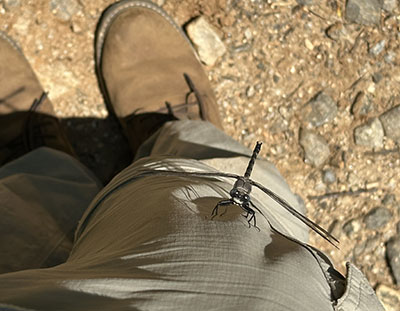 his summer in North Carolina.
his summer in North Carolina.
“This position opened me up to jobs outside of bird fieldwork as, in between bird surveys, I enjoyed surveying the streams and rivers in North Carolina for the many species of fish and dragonflies found there,” Wilson shared. “I definitely enjoyed seeing many cool non-bird species in the wild, such as a hellbender, a bobcat, green salamanders, a hognose snake and timber rattlesnakes.
Wilson, who was named as Purdue FNR’s Outstanding Freshman for 2020-21, worked as a paid undergraduate technician for a study monitoring the effects of bird deterrent systems for use in aquaculture settings. He also worked on an independent research project with Davis Balser to determine what causes bird-window collisions on campus and what changes can be made to reduce the risk posed by building to migrating birds.
Wilson also is involved in the Purdue Student Chapter of The Wildlife Society and is part of Dr. Barny Dunning’s bird banding lab.
Wilson hopes to work with grouse and quail in the western United States after his graduation.
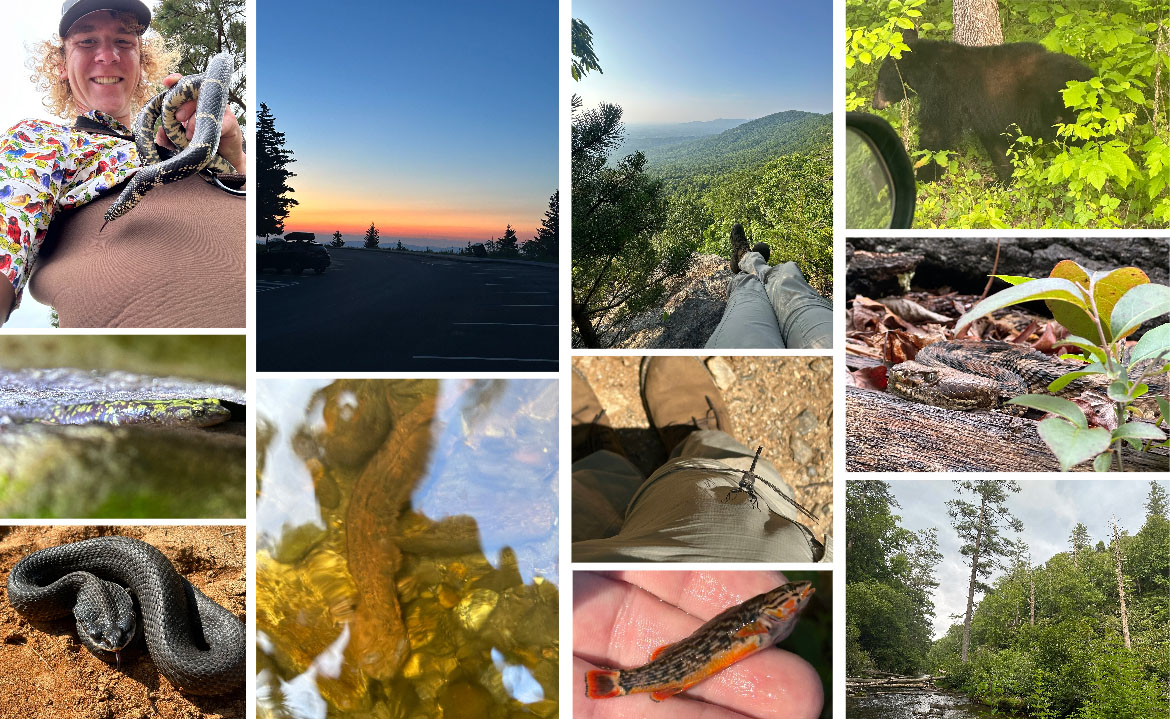 Row 1 (Left to Right): Lucas Wilson holding an eastern kingsnake; a view of Clingmans dome; Bat Cave, North Carolina; an American black bear. Row 2: a Hickory Nut Gorge green salamander; a grey petaltail dragonfly; a timber rattlesnake. Row 3: An eastern hognose snake; an eastern hellbender salamander; a redline darter; a view of the Chattooga River.
Row 1 (Left to Right): Lucas Wilson holding an eastern kingsnake; a view of Clingmans dome; Bat Cave, North Carolina; an American black bear. Row 2: a Hickory Nut Gorge green salamander; a grey petaltail dragonfly; a timber rattlesnake. Row 3: An eastern hognose snake; an eastern hellbender salamander; a redline darter; a view of the Chattooga River. 

